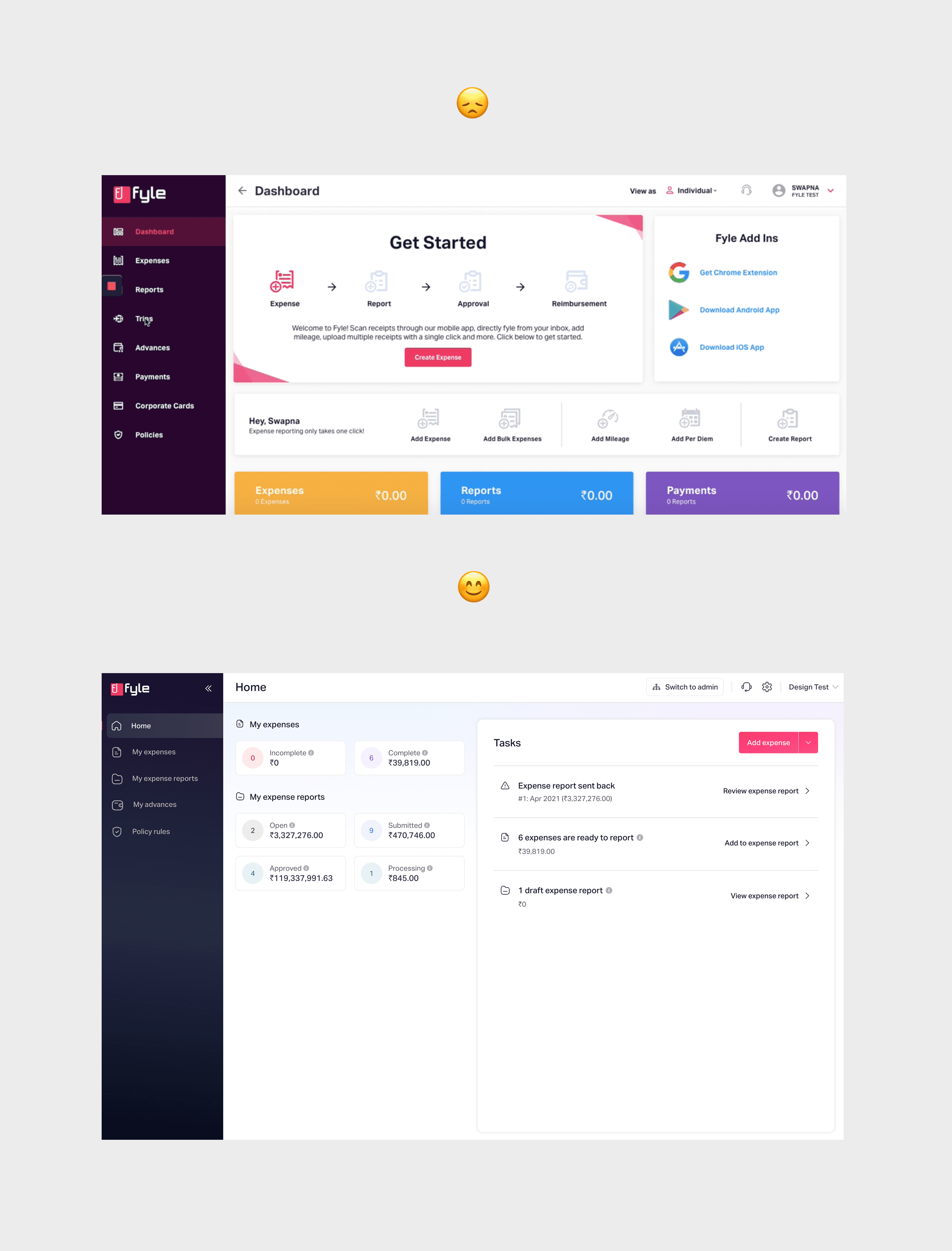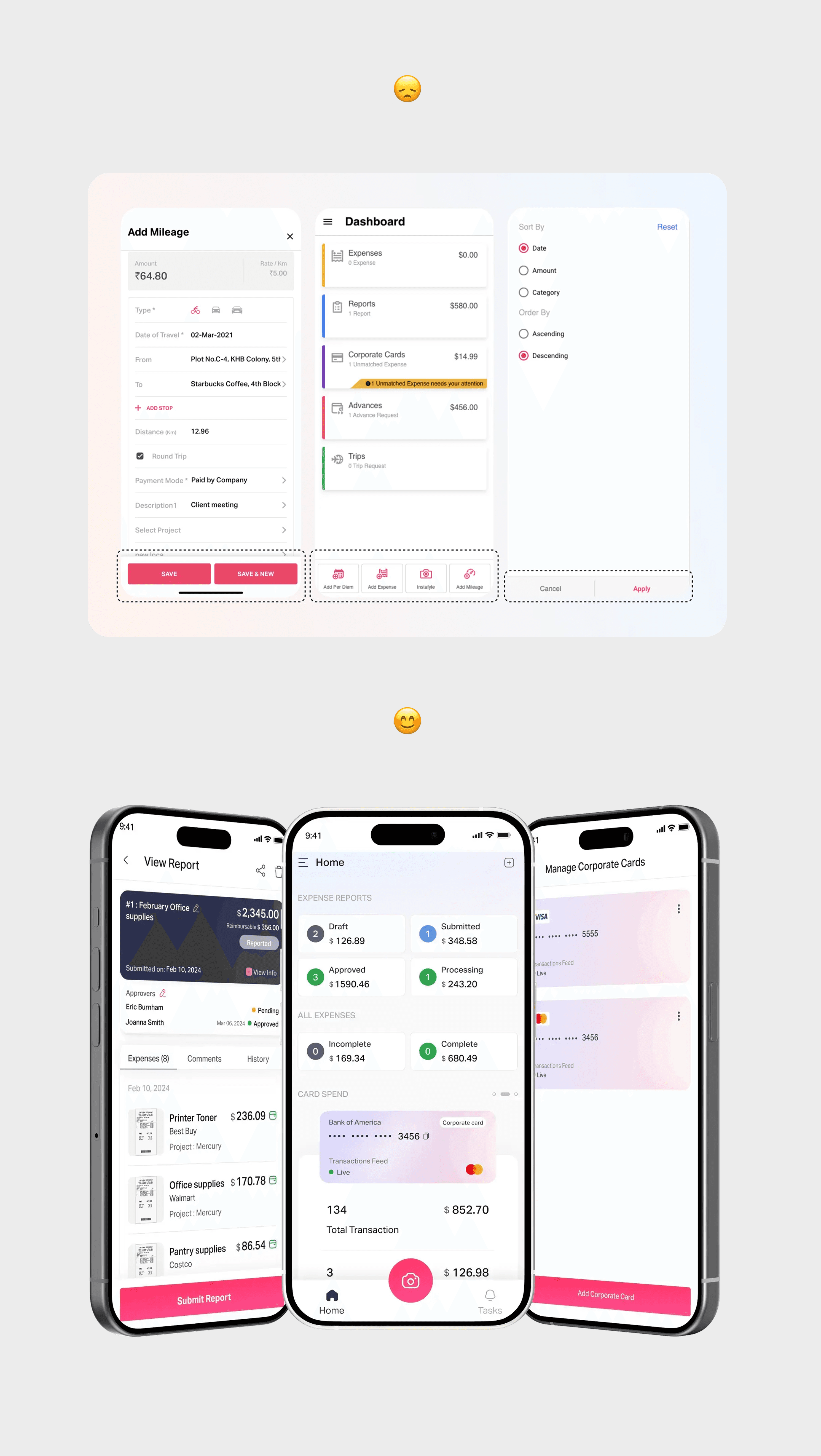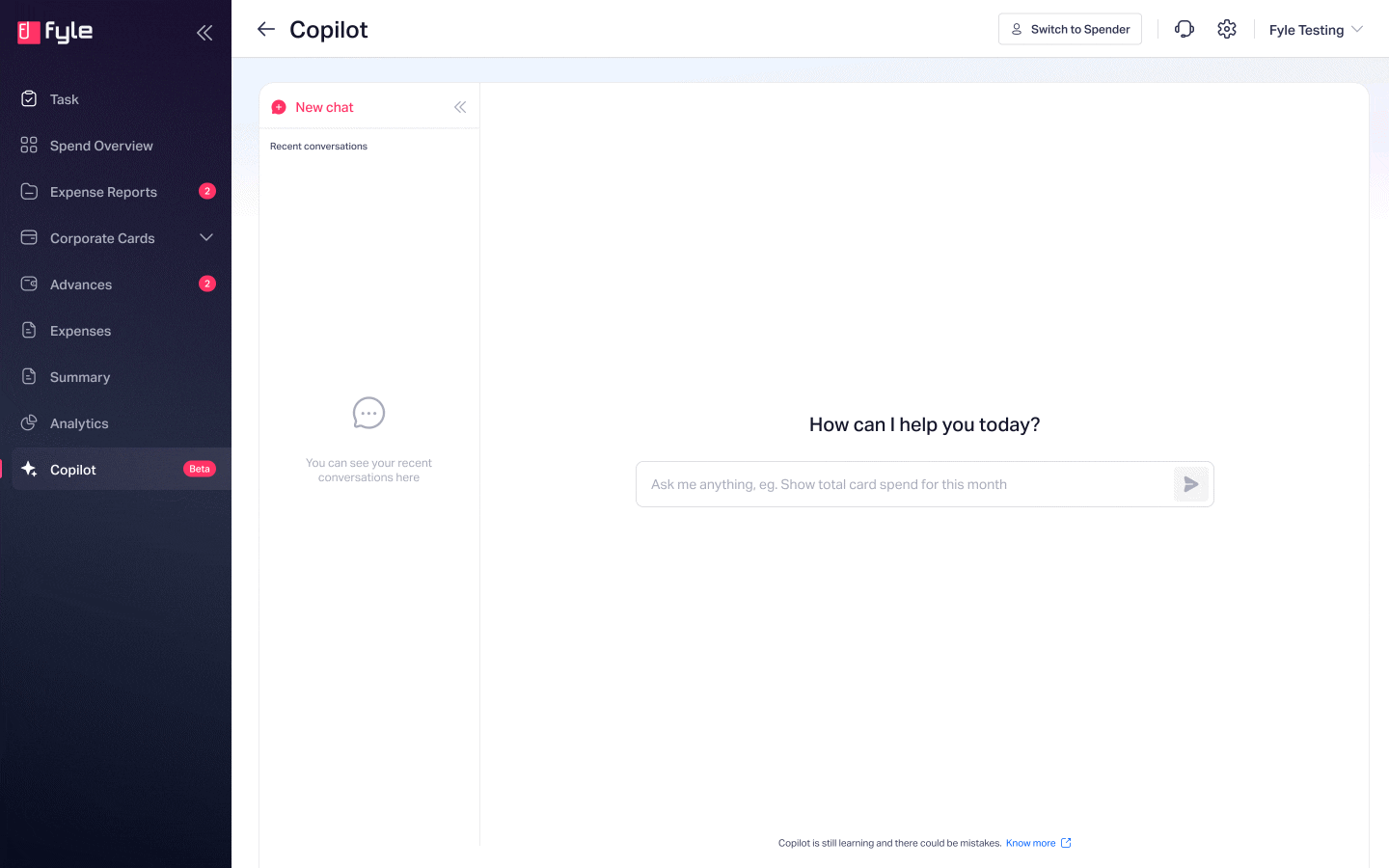How Fyle's design team went from reactive to strategic
Setting up a team of 7 designers, developing strategy and design system, and transforming business growth from 0 to $8M, while increasing NPS from 35 to 60+ with 85% customer retention.
Client / Company
Fyle
My Role
Associate Director
Category
Building a team
Year
2020-2025
01
My Journey at Fyle (2019–2025)
I joined Fyle as a Senior Product Designer during its early days, when the company was focused on the Indian travel market. Then COVID hit, and everything changed. Fyle had to pivot rapidly to the US market, and to everyone’s surprise, demo requests started pouring in. I was still finding my footing in a repositioned product when the momentum picked up dramatically.
In response, I stepped up to lead the design team and strategy. Over the next four years, my work contributed directly to Fyle’s growth from $0 to over $8 million in revenue.
Snapshot
Role: Senior Product Designer → Associate Director
Timeline: 2019–2025
Design Team Growth: 0 → 7+
Business Model: B2B2C, SaaS
02
Increasing design org maturity from L0 to L4

When I took the lead, the culture was engineering-driven. Engineers led design critiques, made subjective calls, and designers had little voice. There was no structured design process, collaboration was limited, and designers lacked a support system.
To change this, I defined a foundational roadmap focused on three pillars
Building the team
Increasing design influence
Creating a strong product vision
It may sound very structured process here, but like Design, this path was messy, was filled with imposter syndrome and made me read various articles, books, countless 1:1s with my manager to manage team dynamics & hiring.
03
Building the team
3.1
Letting people go
When you move from being a peer to a manager, and your first responsibility—after discussions with leadership—is to let some team members go, it becomes an emotional rollercoaster. This being my very first task as a manager, it was an extremely difficult step and stayed with me for quite a long time.
However, I eventually chose to look at it positively. No matter how tough the initial phase seems, with time, it often turns into a win-win situation for everyone involved.
3.2
Rebuilding the team
The experience of building your first team was exciting one. My hiring fundamentals were focused on following aspects
Hard Skills
Soft Skills
High Agency
Culture Alignement
Curious
Soon within 2 months, I was able to build a team of 7. Quite good. :)
3.3
Creating Team Rituals
These were mostly on the operational side to bring structure—be it Figma files, presentations to stakeholders, handoffs, or a structured critique process.
The formalised process included:
Weekly catch-ups to share updates and get feedback
Design reviews built into the product process
End-of-week showcases and creative sessions
A structured buddy system for onboarding

3.4
Team's initial Impact
While the product was going through a pivot, without a structured product team, our newly built design team contributed heavily to the product side e.g
Questioning a few initiatives and deprioritizing them
Finding out the gaps in PRD
Taking leads in various initiatives and delivering 5 star delights
All of these made a major contribution in building a strong base for a marketable product in USA. Fyle hit its $1M+ mark.
3.5
Hiring Early Birds
Being a teacher at heart, I show immense patience when mentoring others and strongly believe in bringing in fresh talent. They often offer valuable 180-degree feedback, as experienced minds may, over time, develop fixed notions about what works and what doesn't—sometimes overlooking new possibilities.
That’s why I brought in a few promising individuals who were later promoted to full-time roles and eventually grew into Senior and Lead Designer positions.
4
Increasing Design Influence
4.1
Visual Direction, Design System Implementation
Aligning core products visual as per marketing website was a deliberate decision to offer a consistent experience and treating both marketing and product design as one unit.
Before that, I did a quick audit of existing design system and found several inconsistencies. Going deeper I was able to uncover some of the other deeper pains e.g
The sales team struggled to pitch a dated UI
Top designers were hesitant to join
Engineering time was wasted on redundant frontend builds
Example of early UI based on old design system

Hence defining a design language and overhauling the entire platform made sense and I got buy ins for the same. After design language implementation, it became the heart of the entire product overhaul.
Example of a new UI designed using the design system, aligned with the marketing website for visual and brand consistency.

05
Envisioning Product Excellence
5.1
Repositioning Existing Value
I observed, Fyle offered many valuable features, but users struggled to discover this value. A few basic changes like placements, different UI structure would have yielded a lot of value. Hence I identified those areas and made them part of the roadmap.
Our first ever release was repositioning the camera icon to the bottom which was used to capture the receipt. This change had a notably positive impact on feature adoption. The adoption soured from 40% to 82%.
5.1
The complete product overhaul - Delivering delights at scale
When I joined Fyle, I found much of product architecture didn’t align with users’ mental models. Hence through a planned roadmap, I was able to brought ~80% overhaul of product despite engg push backs.
The product overhaul was highly concentrated on consolidated flows, improved IA and better enhance experience for clarity through simplified interfaces. Platforms like Integration, we overhauled it entirely from the product perspective.
This contributed to our NPS increasing from 35 to 60+ over the period of time.
Before & after state of Fyle as a product





5.2
Industry first Innovation: Mastercard & Visa RTF
One of our biggest achievements was collaborating with Visa and Mastercard to reshape how company-issued card expenses were handled.
The design team delivered a quick designs for Visa and Mastercard RTF integration and that got approved by Visa on the very first submission. This innovation earned Fyle a feature in Forbes.

5.3
Fyle Co pilot AI
We are very much into entering into AI driven world and at Fyle, I got opportunity to lead its AI Co-pilot initiative. In its BETA phase, I saw an adoption rate of 23%.

06
Building Visibility and Trust
In my first two years of leadership, I consistently advocated for the value and impact the design team brought to the product—whether through company town halls or Slack threads. This helped bring design and designers into the spotlight, eventually leading engineering teams to proactively seek design input even for unplanned initiatives.
07
Outcome
Contributed to $0 → $8M+ revenue growth
0% design attrition over 2.5 years
Design team scaled from 2 to 7
In embedded offerings alone, 1,000+ businesses onboarded, impacting over 800,000+ users
08
Looking back
This journey was deeply rewarding—filled with hard decisions, big shifts, and a lot of growth. I’m proud of the culture we created and the long-lasting design foundation we built together.


